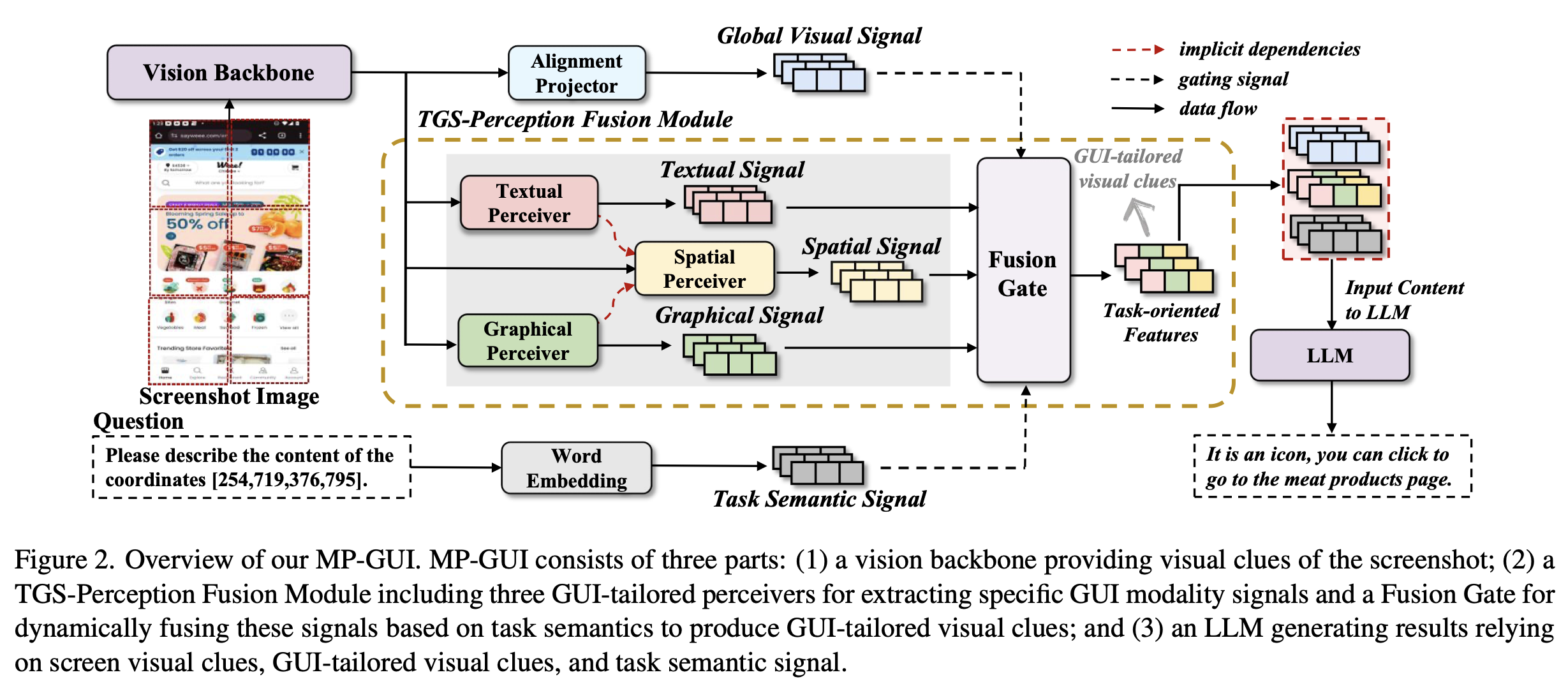-
Configure the Runtime Environment
Execute the following script to set up the necessary environment:
sh env.sh
-
Download Intern2-VL-8B Intern2-VL-8B will be used to initialize the visual backbone, alignment projector and LLM. The other modules of MP-GUI are randomly initialized and trained from scratch as follows: [https://modelscope.cn/models/OpenGVLab/InternVL2-8B]
Follow the steps below to complete the multi-step training process:
-
Training Textual Perceiver
sh MP-GUI/model/shell/multi_step_training/train_textual_perceiver.sh
-
Training Graphical Perceiver
sh MP-GUI/model/shell/multi_step_training/train_graphical_perceiver.sh
-
Training Spatial Perceiver
sh MP-GUI/model/shell/multi_step_training/train_spatial_perceiver.sh
-
Training Fusion Gate
sh MP-GUI/model/shell/multi_step_training/train_fusion_gate.sh
-
Complete Training on Benchmark
sh MP-GUI/model/shell/multi_step_training/benchmark.sh
The following open-source datasets are used in this project:
-
Download the Datasets
Download each dataset and place them in the
MP-GUI/training_datadirectory. -
Update Image Paths
Replace the
image_pathentries in the datasets with your local image paths. -
AITW Specific Processing
For AITW, we randomly sample from the "general" and "install" categories and process them using the following script:
python data_tools/get_small_icon_grounding_data.py
After completing each training step, merge the LoRA parameters and update the weight paths in the training scripts:
-
Merge LoRA Parameters
python MP-GUI/model/tools/merge_lora.py
-
Update Weight Paths
Replace the corresponding weight paths in your training scripts with the merged weights.
You can generate a vast amount of synthetic data using the Qwen2-VL-72B model within the vLLM architecture:
python -m vllm.entrypoints.openai.api_server --served-model-name Qwen2-VL-72B-Instruct --model Qwen/Qwen2-VL-72B-Instruct -tp 8python pipeline/vllm_pipeline_v2.pyAdditionally, the MP-GUI/data_tools directory provides scripts to create spatial relationship prediction data based on the Semantic UI dataset.
@misc{wang2025mpguimodalityperceptionmllms,
title={MP-GUI: Modality Perception with MLLMs for GUI Understanding},
author={Ziwei Wang and Weizhi Chen and Leyang Yang and Sheng Zhou and Shengchu Zhao and Hanbei Zhan and Jiongchao Jin and Liangcheng Li and Zirui Shao and Jiajun Bu},
year={2025},
eprint={2503.14021},
archivePrefix={arXiv},
primaryClass={cs.CV},
url={https://arxiv.org/abs/2503.14021},
}


